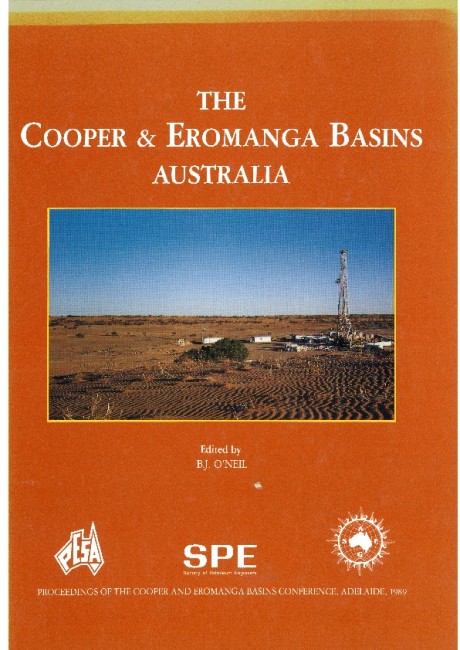Publication Name: The Cooper & Eromanga Basins Australia
Authors: A.R. Gilby and I.R. Mortimore
Date Published: June 1989
Number of Pages: 27
Reference Type: Book Section
Abstract:
Although the Eromanga Basin where it overlies the northern Cooper Basin has not proved as prolific an oilprovince as in the southern Cooper Basin, a number of key discoveries have been made in recent years which offer the prospect of further economic oil accumulations.
An analysis of the structural framework of the northern Cooper Basin/Eromanga Basin indicates discovery locations to be associated with early growth features, particularly prePermian north-west/south-east trends. Although often carrying strong hydrocarbon shows which appear to reflect limited hydrocarbon generation since uplift, late (Tertiary) features have to date proven to be dry.
Poor reservoir quality has long been cited as a principal reason for a lack of success in this area. Certainly, silicification of sandstone reservoirs is pervasive and the resultant exclusion of primary porosity is a critical factor in assessing the probability of adequate reservoir. Recent drilling has, however, indicated this may not be as critical as originally assumed, with hydrocarbons being produced from a number of stratigraphic levels.
The controversy which is central to any assessment of the prospectivity of the northern Cooper Basin region is
whether the oils trapped in the Eromanga Basin section originate wholly or largly from Permian sources. Maturation indicators and current maturation levels in potential source horizons indicate that the oil could be either Jurassic or Permian sourced. Biomarkers indicate that a number of the oils have a strong Jurassic source component. This result has important ramifications for the prospectivity of the areas where a thick Triassic sequence potentially seals the Permian section from Eromanga reservoirs. The Permian is nevertheless a proven source for hydrocarbons in this northern area and is considered to be the primary source for Eromanga reservoired oils. In some parts of the Basin, there is evidence that a sandier Triassic sequence has allowed vertical migration of Permian-sourced hydrocarbons. This, together with potential fault conduit migration, supports a Permian source theory.
The significance of the Eromanga Basin discoveries is assessed by an examination of the Cook, Kercummurra and
Toby Fields and other important oil recoveries from the Eromanga section viz. from the Cuddapan-1, Marengo-1,
Morney-1, Mt Howitt-2 and Wareena-1 wells.


